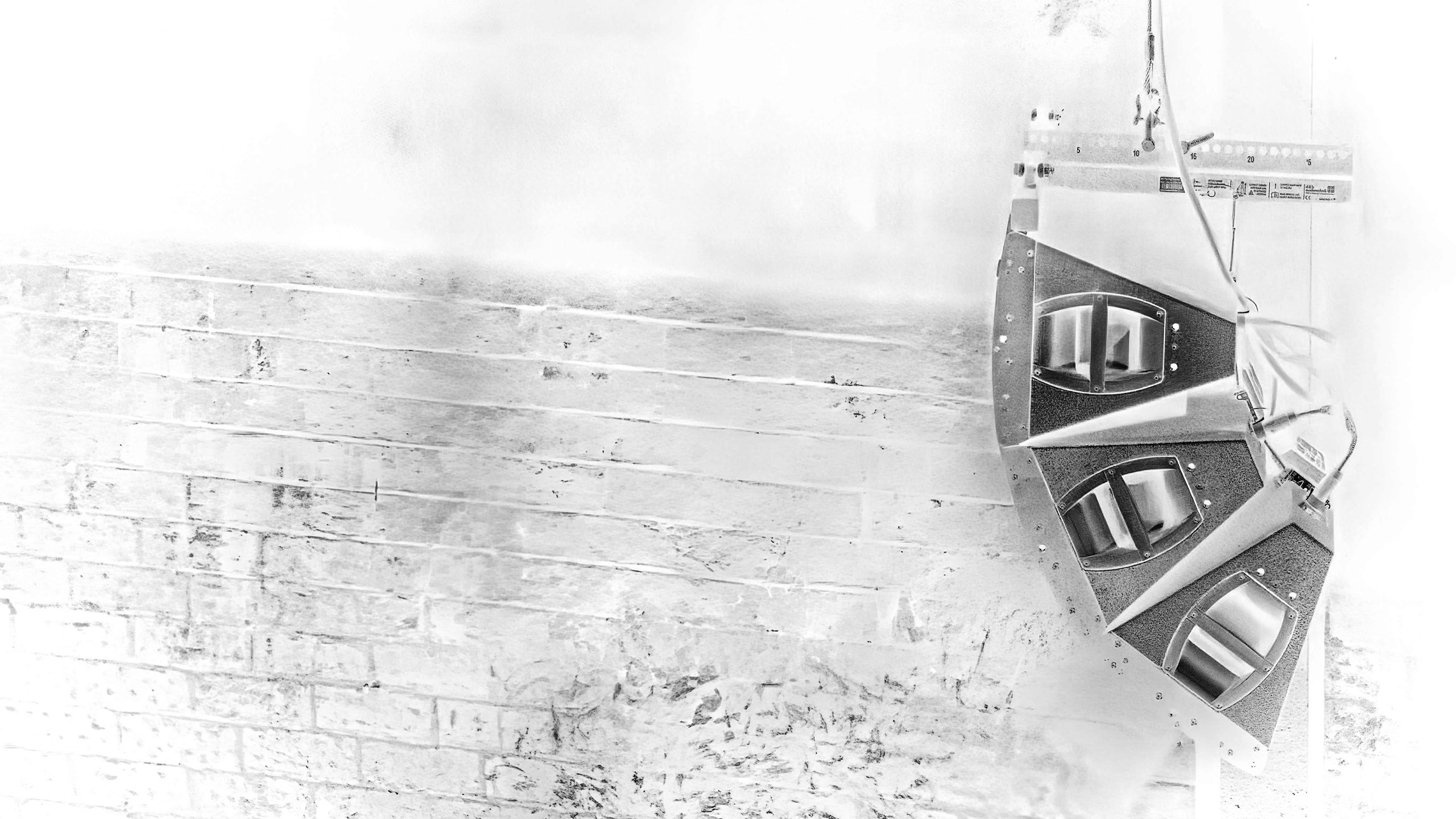Review: Kali Audio IN-UNF
The IN-UNF promises accurate monitoring in a close-up listening position. Let’s see if it delivers.
By Preshan John, Audio Technology.
Mixing in small rooms is a fact of life. Not everyone has a perfectly treated mix environment where sound waves have the room to develop and the pesky problem frequencies are addressed with their own Helmholtz resonators.
The issue is, how can you trust your mixes if you’re in a room that’s acoustically tarnishing the true response of your expensive studio monitors? Or if the room’s modest size means you’re sitting half a metre too close to your monitors than their optimum listening distance?
Option one: mix on headphones. Option two: drop a couple of grand on acoustic treatment. Option three: try some ultra nearfield studio monitors.
GET CLOSER
The Kali Audio IN-UNF studio monitors occupy this ‘ultra nearfield’ category. A clue is its unconventional form factor, which diverges from a typical rectangular speaker cabinet with forward-facing drivers that’s placed at least a metre away. Rather, with an ideal listening distance of 0.8m, the IN-UNF is designed to be up close and personal. It’s the audio equivalent of ultra short throw projection in the sense that it’s optimised for a short ‘throw’ distance. This configuration achieves a couple of things. Firstly, it means you can monitor at lower levels. Secondly, it reduces the influence of a room’s acoustics to the degree that the proximity means your ears receive more direct sound and less reflected sound.
The IN-UNF is a three-way monitoring system in Kali’s Project Independence line of products. The two ball-shaped satellites house the same coaxial drivers used in Kali Audio’s IN-5 and IN-8 with a four-inch midrange driver and one-inch textile dome tweeter extending up to 25kHz (±3dB). The subwoofer (which could be mistaken for a CPU tower) is designed to sit on your desk – not on the floor. Two horizontally opposed 4.5-inch drivers cancel out vibrations transmitted to the desk’s surface and supply low frequency extension down to 47Hz (±3dB). Crossover points are at 280Hz and 2.8kHz.
Hooking the system up begins with the subwoofer. Once powered via IEC cable, plug the two passive satellites into the sub using the included banana connectors. Audio input options include balanced 6.5mm TRS, stereo 3.5mm, USB-C, and Optical. The USB-C input means you can use the IN-UNF without an audio interface.
ALL ABOUT LOCATION
Positioning of each unit is of crucial importance. One thing I appreciated about the Kali Audio IN-5 was its hyper accurate stereo imaging. To achieve the same precision with the IN-UNF, Kali Audio insists the satellites must sit in a very particular spot relative to the subwoofer, denoted on the included A4 placement card with traced positions. Aiming the satellites directly up at your ears is important, too, and easily done thanks to the rounded silicone pads they sit on. The subwoofer can sit vertically or horizontally. I elected to use the sub horizontally as a monitor riser. It’s a big unit (49cm wide, 29cm deep, 13cm tall), so sitting it vertically may be your only option if your desk isn’t very deep.
A series of dip switches sit next to the input connectors. Settings for different placements and configurations (boundary EQ) are available here, including 2dB boosts for bass, mids, and treble, and a 4dB bass boost on its own.
ULTRA NEARFIELD
How’s the ultra nearfield experience? I have to be honest – it takes some getting used to. With typical studio monitors sitting horizontally at ear level, I am accustomed to the stereo image spreading out in front of me like a widescreen TV. Because the IN-UNF satellites sit at desk height angled up – much like a pair of Logitech computer speakers – listening to tunes with the expectation of a studio monitor experience was initially disorienting, and felt somewhere in between listening on headphones and being in a fishbowl.
After telling myself to give the monitors a proper go, my ears began to settle into the IN-UNF experience. The full stereo spread is still very much present; all the precision of the bigger IN-Series siblings is evident in the IN-UNF and imaging is firm and articulate. It’s just lower. That may sound weird and obvious, but it took a few days before it felt natural.
One thing’s for sure: tonally, the IN-UNF’s are excellent studio monitors. Music is presented with a flat, honest neutrality. High and low frequencies extend smoothly in either direction. Worth noting is how the sub (on its flat setting) beautifully lifts the low end without sacrificing accuracy, and the unit’s placement at desk height between the satellite speakers seems to help everything glue together. On a slap bass track, for example, both the metallic ‘snap’ of the strings and the thump of the bottom end emanate from the same physical point, resulting in a super tight, focused and broadband sound.
From jazz to funk to pop to metal, the IN-UNF faithfully served back whatever I gave it without playing favourites, thanks in no small part to a particularly smooth midrange that neither flatters nor ruins source material. Trebles felt mildly under-represented to me, perhaps because my daily monitors are comparatively toppy, so the 2dB high shelf boost worked a treat. The textile dome tweeters have a sweet sound that’s a far cry from the piercing counterparts of other studio monitors in this price range. And the sub is really just a joy to mix with. Never obtrusive or overstated, it’s perfectly voiced for a small space and amazingly manages to maintain clean and tight low end even while sitting flat on a desk.
I also found the IN-UNF easy to monitor through for long periods. That may have something to do with the fact I didn’t feel a need to crank the speakers up in order to adequately hear a mix, and I’m sure the lower monitoring levels combined with the gentle trebles contribute to the lack of listening fatigue.
FIELD GOAL
Being my first encounter with ultra nearfield monitoring, the Kali Audio IN-UNF has sold me on the concept. Placing a large pair of monitors at its optimal distance from the listening position might be impossible in a small room. The IN-UNF solves this problem, yet without making sonic compromises. The inclusion of the subwoofer is what allows the IN-UNF to compete with (or replace) a pair of traditional nearfields, letting you rest assured the full frequency spectrum is adequately covered, and it certainly sounds good enough to take seriously as a studio monitor.
If you’re in a situation where bigger studio monitors would be overkill for your mixing environment but you don’t want to switch exclusively to headphones, the IN-UNF could be the perfect choice. Just remember to allow for a brief adjustment period.
NEED TO KNOW
Kali Audio IN-UNFUltra Nearfield Monitors
PRICE: AUD $1,499.00 RRP
CONTACT: NAS – (03) 8756 2600 or sales@nas.solutions
PROS
- Transparent and honest response
- Coaxial satellites deliver tight stereo imaging
- Subwoofer is voiced beautifully
- Subwoofer takes up a lot of desk space
Full-range studio monitoring in close proximity: that’s what the Kali Audio IN-UNF offers, and it pulls it off. The three-way ultra nearfield monitoring system uses the same coaxial drivers as the acclaimed IN-5 and IN-8 monitors to deliver accurate sound and precise stereo imaging in a mixing environment where space is limited.


